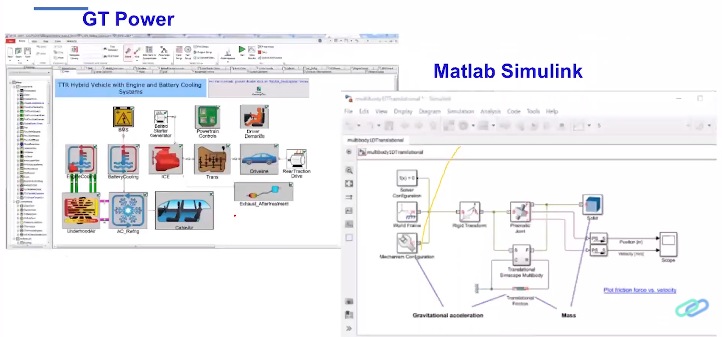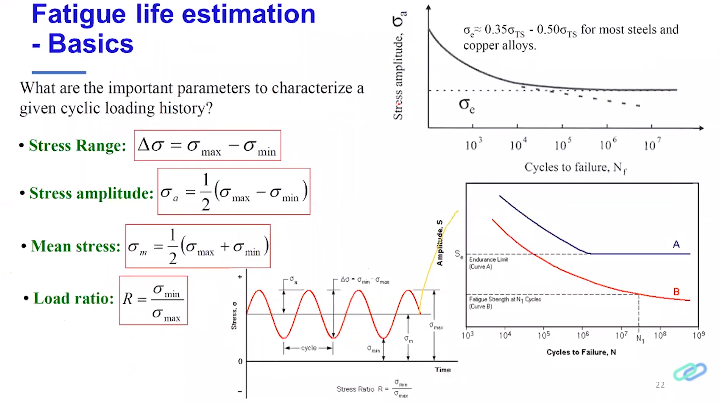Modified on
Factors and Failures That Affect Simulation in Product Development

Skill-Lync
While simulating your model, you must take into account the factors that can alter it, as well as which simulation type would best suit your interests and your system design. You must also take into account the mechanical failures that arise because of various factors and thus can sabotage your simulation results.
As a result, this blog covers simulations and their types, along with some mechanical failures and their reason for their occurrence.
What Is CAE? A Look at Various Simulations
Computer-aided engineering (CAE) is used to simulate performance to improve product designs or help resolve engineering problems for a wide range of industries.
CAE is a way of replicating the deterrents in your system into mathematical models. The simulations can be 1D, 2D, or even 3D.
CAE includes simulation, validation and optimization of products, processes, manufacturing tools and other factors that include -
- Stress and dynamic analysis of components and assemblies via finite element analysis (FEA) that include structural as-well-as thermal integrity.
- Thermal and fluid analysis with the help of computational fluid dynamics (CFD) to check fuel-flow through the valves and test their durability.
- Kinematics and dynamic analysis of mechanisms (multibody dynamics) to analyze your system in action and check for any drawbacks.
- Simulation of manufacturing processes like casting, moulding and die press forming to check temperature regulations and weld lines.
- We maintain electrical and electromagnetic analysis to ensure the EMF forces and flux stay at considerable levels with minimal losses.
- Designs get evaluated and refined using computer simulations rather than physical prototype testing, saving money and time.
- CAE helps engineering teams manage risk and understand the performance implications of their designs.
- CAE can provide performance insights earlier in the development process when design changes are less expensive.
Key Elements of Simulation
Here are some pivotal elements of simulation that you need to take into account -
- While simulating your model, you are replicating your physical model in terms of a mathematically devised model.
- You must use the same parameters and physical conditions while formulating a mathematical model to yield desirable results.
- A clear understanding of the desired output from simulation can help in studying the physical behaviour of your system.
- It will help if you gather the desired inputs, such as the material data and solid models.
- Parameters such as the boundary conditions, mounting via brackets, bolted, or welded are some crucial conditions to consider. If your model is low-load, it may not enter the plastic zone, which then requires a different material model; otherwise, the material model is subject to variation.
- Validation of simulation is necessary as you must have test results to better tune your simulation with a strong rationale. Fixed constraints might appear sound on papers but might vary in real-time scenarios.
- Result interpretation to spot errors, shortcomings, or hidden technicalities that require attention.
Top Three Factors That Influence Results
These are the top three factors that influence the results of simulation-driven product development if you are not careful enough -
- A wrong mathematical presentation (Using wrong/improper BC's/Loads) can alter results significantly. For instance, instead of flexible fixation, you might end up with the rigid fixation, and you could not define that contact.
- Improper selection of material models can lead to varying results as choosing a material that might not comply with the structural integrity of your system can end up in disasters.
- Inconsistent units are an influential factor that is more prevalent in new users and is a primary factor that affects results.
A Few Simulations: How Do They Look?
Here are a few simulations and the way they appear to the users -

- GT Power
GT Power is a 1D simulation tool; however, it has features to incorporate 3D simulation as well.
For instance, when we apply some force on a spring which displaces it, we do not care about the material distribution throughout the cross-section of the spring.
Thus, we model the spring as a rigid bar such that it deflects after the application of force without considering redundant parameters about its cross-section.
1D simulation has certain benefits such as -
- It is beneficial in the conceptualization phase.
- We can use 1D animation to develop a system with multiple components. We get an intricate mapping of each element without having to consider unnecessary values.
- MATLAB Simulink
Simulink is a MATLAB-based graphical programming environment designed for modelling, simulating and interpreting multi-domain dynamical systems. MATLAB Simulink also has features for 1D simulation.
Some 3D and 2D simulations include -

- Structural Simulation
This simulation is a single stage of the turbine blade system where we simulate centrifugal load.
- Electric Field Simulation
In this simulation, we have a core and a coil, that when excited, leads to the variation of electric flux and electric flux density.
- Thermal Simulation
This simulation contains a PCB that houses some mounted ICs such as IGBT that dissipate high power to observe temperature variations.
- Hair Flow Simulation
Flow simulation is a form of computational fluid dynamics that digitally replicates flows in surface water or collection systems.
Flow simulation facilitates the prediction and analysis of how a flow might get impacted by complex geometry in an operational setup.
Typical Mechanical Failures
In this section, we discuss the typical mechanical failures that occur in systems and their reasons.
- Material Failure: When you exceed the load on material beyond its tolerance value, it cripples and leads to material failure.
- Frequency/Vibration: The aftermath of random or sinusoidal vibrations and resonance can generate excessive loads or deformations of a structural component that can cause vibration failure.
- Fatigue: It is the crippling of a material caused by cyclic loading that leads to progressive and localized structural damage as-well-as the growth of cracks.
- Buckling: It is the sudden change in the shape of a component under load. It includes the bowing of a column under compression or the creasing of a plate under shear.
- Thermal: It is a fatigue failure where visible cracks appear by cyclic thermal stresses and strains because of temperature changes, spatial temperature gradients, or high temperatures under constrained thermal deformation.
Fatigue Life Estimation - Basics

The two primary factors that affect fatigue life include -
- Stress Amplitude
- Mean Stress
We observe fatigue failure when the loads are pulsating, be it temperature load, pressure load, or any other category. With repeated loading, your system gets more prone to failure.
Even an automobile at rest on the road experiences vibrations from the engine in its different components. The displacement because of vibration can range from +10mm or -10mm.
Displacement implies a change in load, which varies from -x to +x. When the automobile moves, more vibration flows in via the road.
Final Words
Mechanical failures arising during simulation-driven product development can affect the integrity and structure of your design. Thus, one needs to keep a sharp eye out for any malfunction in the system.
Visit Skill-Lync to gain further insights into product development via simulation and how to use it to proliferate efficiency at your workplace.
Check out the List of Job opportunities for your Engineering domain
Author
Navin Baskar
Author

Skill-Lync
Subscribe to Our Free Newsletter

Continue Reading
Related Blogs
The article highlights the importance of a battery management system and the work dynamics of an ideal battery cell. It illustrates the different parts of a cell and the procedure of converting a cell into a battery. This is part 3 on our series on the application of a Li-ion battery for electric vehicles. In the final part, Skill-Lync aims to shed light on the drive cycle of an electric circuit, the state of charge of a Li-ion battery followed by the fundamental parameters for an HV battery.
26 Jul 2020
This article is part 1 of a series which talks about Lithium-ion Battery for Electric Vehicles illustrates the suitability of Li batteries in the automotive industry. Read about how Skill-Lync's electrical course can get you employed in the HEV sector
23 Jul 2020
In continuation of part 1 of the application of Li-ion battery for electric vehicles, part 2 of this article discusses the different types of cells, battery elements, and their various features. Read how Skill-Lync's HEV courses can help you get employed in the HEV domain. This is part 2 of Skill-Lync's series on the application of Li-ion batteries for electric vehicles. Part 1 of this series touched upon the significance of Li-ion cells for the propulsion of electric vehicles.
23 Jul 2020
Using two case studies, read about the career opportunities in the HEV domain as a Drive Development engineer. Learn about system design in detail as we at Skill-Lync explain the working of a Mahindra Scorpio powered by a microHYBRID engine.
22 Jun 2020
Hybrid Electric Vehicles (HEVs) are the future of transport technology, and Powertrain Control Systems is the brain of it. ECUs and TCUs are the predominant components of the PCM. They promise greater control and accuracy, offer a pollution-free world, and a cleaner energy source. Read on how Skill-Lync's hybrid electrical vehicle courses can help you get employed.
19 Jul 2020
Author

Skill-Lync
Subscribe to Our Free Newsletter

Continue Reading
Related Blogs
The article highlights the importance of a battery management system and the work dynamics of an ideal battery cell. It illustrates the different parts of a cell and the procedure of converting a cell into a battery. This is part 3 on our series on the application of a Li-ion battery for electric vehicles. In the final part, Skill-Lync aims to shed light on the drive cycle of an electric circuit, the state of charge of a Li-ion battery followed by the fundamental parameters for an HV battery.
26 Jul 2020
This article is part 1 of a series which talks about Lithium-ion Battery for Electric Vehicles illustrates the suitability of Li batteries in the automotive industry. Read about how Skill-Lync's electrical course can get you employed in the HEV sector
23 Jul 2020
In continuation of part 1 of the application of Li-ion battery for electric vehicles, part 2 of this article discusses the different types of cells, battery elements, and their various features. Read how Skill-Lync's HEV courses can help you get employed in the HEV domain. This is part 2 of Skill-Lync's series on the application of Li-ion batteries for electric vehicles. Part 1 of this series touched upon the significance of Li-ion cells for the propulsion of electric vehicles.
23 Jul 2020
Using two case studies, read about the career opportunities in the HEV domain as a Drive Development engineer. Learn about system design in detail as we at Skill-Lync explain the working of a Mahindra Scorpio powered by a microHYBRID engine.
22 Jun 2020
Hybrid Electric Vehicles (HEVs) are the future of transport technology, and Powertrain Control Systems is the brain of it. ECUs and TCUs are the predominant components of the PCM. They promise greater control and accuracy, offer a pollution-free world, and a cleaner energy source. Read on how Skill-Lync's hybrid electrical vehicle courses can help you get employed.
19 Jul 2020
Related Courses
